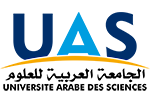
This theme is built using the Mythology Engine theme foundation by Brandon Jones (MDNW).
Mythology Engine has been developed with the sole purpose of creating an efficient method of publishing themes with a streamlined development process. It strives to adhere to best practices while simultaneously extending theme functionality beyond what vanilla WordPress offers. I acknowledge that this is inherently oxymoronic, but that I’ll do it’s best to marry the two edges of « standards » and « features » responsibly.
Mythology Engine is something in-between a framework and a starter theme. It attempts to:
- Maintain the highest possible WP Standards.
- Expedite the theme-production process.
- Limit « extended theme functionality » to a bare minimum.
- Provide consistent & straight-forward solutions to common publishing headaches.
- Make long-term code-maintenance as simple as possible.
mythology engine goals
We strive for a simplified workflow using a « less is more » approach to theme options and customization features. A successful theme accomplishes the following:
- Easy to install and setup.
- Easy to publish content.
- Easy to customize it’s appearance.
- Has the least amount of « theme options » possible to accomplish 1, 2, and 3.
- Doesn’t break when WP releases updates.
- Doesn’t require frequent updates for critical bug-fixes.
- Doesn’t require advanced code knowledge for reasonable use.
- Doesn’t require « memorizing » the theme documentation.
- Doesn’t require a full-time support staff to answer customer questions.
- Loads fast on the front and backend.
- Scores reasonably high scores on « site speed » tests.
- Provides native fallbacks for all « extended » features.
features & guidelines
- Supports all native WP features.
- Theme design that is centered around native WP content, not eccentric or overly custom plugin-driven content.
- A Theme Options panel that allows users to make theme-specific decisions without complication or redundancy.
- Post & Page Options that allow users to override « Theme Options » when applicable on individual posts.
- A Theme Customizer that allows for « live » theme skin edits (color, fonts, etc.) using the WP Theme Customizer API.
- A Drag and Drop editor that allows for quickly building layouts with rich web content into pages & posts.
- The ability to take any theme-included-plugins (and content) with you after you switch to another theme.
- The ability to switch to another theme without destroying/losing any of your site content.
- The ability to quickly replicate the theme marketing demo by auto-importing the theme-options and content.
- Fully Optional Plugins. The theme can be used without ANY plugins, even if we recommend them and even if the theme-demo uses them extensively.
on custom functionality & plugins
Custom functions are only used when they are tied into to the theme’s template files.
- IE: Custom post navigation, custom search features, breadcrumbs, etc.
- In short, they extend the ability that WP inherently has to pull existing content from the database and into the frontend.
- Custom plugins are used when it adds custom content.
- IE: Sliders, ShortCode Content Builders, « Flavor of the Day » features, etc.
- In short, they bring in new features that are not specific to any one theme.
mythology engine structure
A Mythology/Core theme consists of two sections:
Section 1: The « Core » set of files (found in the /functions/mythology-core/ folder).
- This includes functions, scripts, and styles that can be reasonably expected to be required in all themes.
- When the « Mythology/Core » version is updated, the entire folder can be updated without compromising past theme versions.
- All filenames (other than images) are prefixed with « mythology » or « mythology-core ».
Section 2: The « theme » files (everything that’s not inside /functions/mythology-core/)
- Functions, scripts, stylesheets, and templates that are likely to change from one theme to the next.
- Theme files are unique to each theme, but they contain similar markup, syntax, and organization.
We highly recommend using a « minification » plugin with this theme for the purpose of condensing/combining the various CSS/JS files. BWP Minify and W3 Total Cache are excellent plugins that will accomplish this.
third party plugins
This theme provides baseline support for the most popular third party WP plugins by adhering to strict WP-recommended theme standards. Using most plugins will not break a Mythology Engine theme.
If a plugin does break the theme’s layout, please report it using the support link below so we can check it out. This doesn’t mean we can fix it, of course, but we’ll take a look whether or not we respond to the bug report.
This theme does NOT provide full skins or other extended/native theme support for all plugins (unless explicitly stated in the theme features).
support & disclaimers
This theme is sold and/or distributed AS-IS. We do not provide any support for this theme, including theme-setup, theme-customizations, help with plugins, or anything else related to theme-implementation.
We do encourage users to report bugs though! Please report bugs to: http://makedesign.ticksy.com
Our focus is on providing theme-updates over time that (a) eliminate bugs, (b) improve speed and stability and, (c) extend theme functionality.
license
Mythology Engine has been built to be rebuilt, so use it as you please. It’s fully GPL; Please note that individual themes will usually include plugins that are NOT GPL though… so while the entire theme is GPL (including all PHP, CSS, and JS), we can’t release the theme-packages as such without the permission of the plugin-makers. That means you can’t distribute this theme with the plugins included… if you intend to do so, please remove the files in the /functions/theme-plugins and the /functions/mythology-core/core-plugins folders. You also need to remove any references to those plugins in the /functions/theme-plugin-loader.php file.
